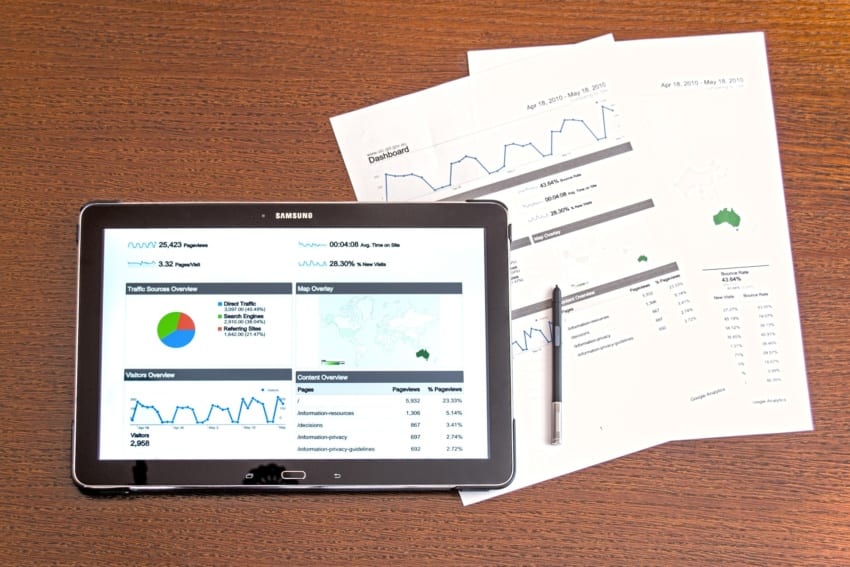Advertising campaigns have been and remains one of the main ways of attracting the attention of consumers to the goods and services of companies. For this reason, you need to evaluate the effectiveness of advertising companies. What about evaluating the effectiveness of an ad? Below you will find simple formulas with which you can get a complete picture as to whether your company was successful or not.
The Main Kinds of Advertising Campaign Effectiveness
Today, there are many ways to evaluate the effectiveness of an advertising company. However, all of them are aimed at assessing two types of effectiveness:
- Financial.
- Communicative.
Financial efficiency reflects the effect of the advertising campaign on economic performance indicators such as sales, revenue, margin, and of course profit.
Communicative efficiency shows the result of ads on consumers in terms of increasing brand or company recognition, remembering ads, increasing loyalty, and so on. Such effectiveness is usually measured by obtaining feedback from consumers or by using a focus group. For example, before watching YouTube videos a questionnaire is displayed with the advertisement of which brand you recently saw.
How to Measure Advertising Effectiveness?

Now let’s move on to the methods of measuring advertising effectiveness. It is much easier to do than you think, and now you will see it.
Changing Efficiency After Implementing an Advertising Campaign
To calculate this indicator, you need to use the following formula.
Efficiency = Value of the indicator after the advertising campaign – values of the indicator before the advertising campaign.
Using this formula, the effectiveness of an advertising campaign can be measured. It is possible to determine revenue growth or even how brand awareness has changed. If the value of the indicator is greater than 0, then in this case the advertising campaign is effective.
Estimated Profit Growth After an Advertising Campaign
Of course, it is important to know how the ad campaign affected profit growth. This can be determined using the following formula:
Efficiency = (Profit after the advertising campaign – Profit before the advertising campaign) / Budget of the advertising campaign.
If the result is higher than one, then we can say that the ad was effective.
ROI calculation
ROI = (Profit from an advertising campaign-budget of an advertising campaign) / budget of an advertising campaign.
The ROI indicator should be greater than 0. Since the higher its value, the more effective an advertising campaign is.
Now you see that it is not difficult to evaluate the effectiveness, but the results obtained reflect the real picture of what you got in the end.
Marketing Activities Effectiveness Measuring Mistakes
Now let’s talk about errors that relate to evaluating the effectiveness of advertising campaigns.
Efficiency is not evaluated at all.
Business owners do not evaluate whether advertising has produced a positive result or not. And then they wonder where the money is spent and why there is no effect. Economic experts often point out that business owners are the first persons to be highly interested in the result of their marketing approaches.
“Our customers do not just order texts. They clearly know what effect their business should receive from each line. Yes, they always get what they want! “-explains the CEO at Pick The Writer.
Content marketing efficiency isn’t evaluated
Even text for a blog or social media needs to be considered from the point of view of efficiency. By the way, advanced business owners require certain performance indicators from the text when hiring a company or a freelance writer. You can also ask the authors about the effectiveness indicators of their texts. Bonafide companies, for example, Writing Judge, have such data, so feel free to ask what effectiveness evidence can you expect from their content.
Other factors are not taken into account
When evaluating effectiveness of an ad, some marketers forget to take third-party factors into account. For example, these factors include seasonality, which in itself has a strong effect on sales. You also need to consider such a factor as response advertising to the actions of competitors.
Did Advertising Campaigns Not Bring the Desired Effect? Here Are the Reasons Why
There are several obvious reasons that have a direct impact on the failure of advertising performance.
Conducting an Advertising Campaign Outside of Planned Activities
Most decide to advertise spontaneously. Someone comes up with the idea that advertising is urgently needed and they are beginning to take measures without real estimates of the budget and upcoming costs.
Advertising Camapaign as a Response to Competitors
Many companies decide to promote themselves spontaneously as a response to competitors. Limited time frames adversely affect the quality of the advertising campaign as it will be very difficult to avoid mistakes. In the event of a response, competitors are better off skipping the attack and spending time thinking well about their future strategy and launching ads the next time.
Target Audience Mistake
A clear understanding of who the consumer is improves the likelihood that an advertising campaign will hit right on target. But often companies do not bother to find out the behavior model of their consumers, their value system, and motivation. Therefore, the ad isn’t customer-specific and does not catch consumers. As a result, the company pays for the poorly thought-out marketing campaign but there is no influx of new consumers.
Wrong Channel Choice
Finally, we moved on to the most common mistake that almost every company faces. Moreover, this can happen both when starting an advertising campaign independently, and even if you’ve hired a professional. To make it clear what the essence is, let’s look at a banal example.
The owner of a small beauty salon decides to create a site and promote it, hoping that the flow of customers will increase. However, if this is a small city and there is no world-famous master in this salon, then it is wrong to expect real benefits from the site. It is necessary to focus on local advertising tools so that residents in the district can know that nearby they can get high-quality services at affordable prices. And the site should serve only as an image page, and not a way to attract customers.
Conclusion
The effectiveness of advertising is not only a reflection of the results but also a guideline that allows you to choose the best advertising tool. The market situation is constantly changing, so it is always necessary to stay flexible and be ready to implement new but properly planned ideas. For this reason, you should pay special attention to the planning of all promotional events. Evaluation of effectiveness will allow you to correct mistakes in the future and make such an advertising campaign that will bring only benefits and new consumers.
Author Bio
John Edwards is a writing specialist who is looking for ways of self- development in the field of writing and blogging. New horizons in his beloved business always attract with their varieties of opportunities. Therefore, it is so important for him to do the writing.





